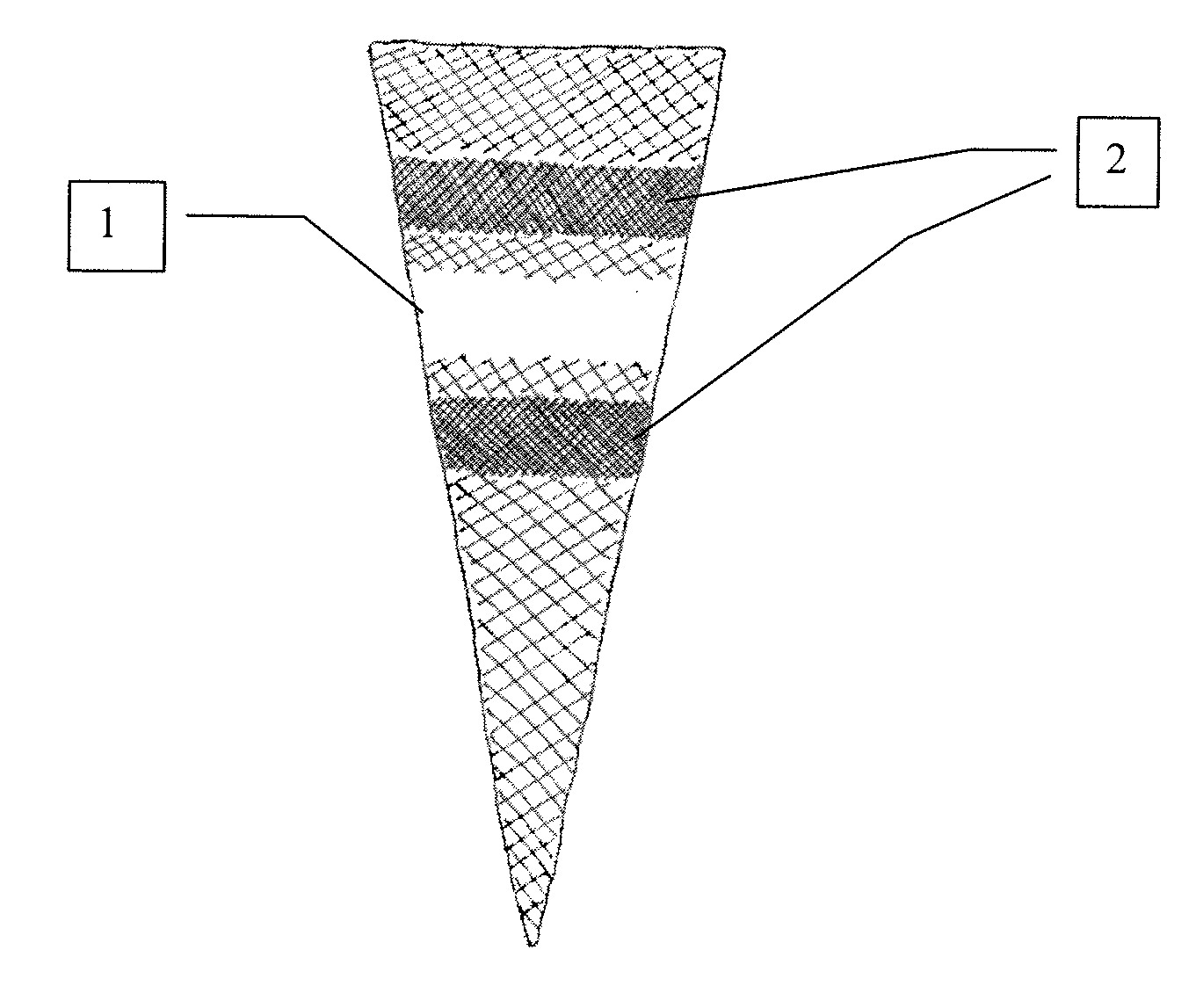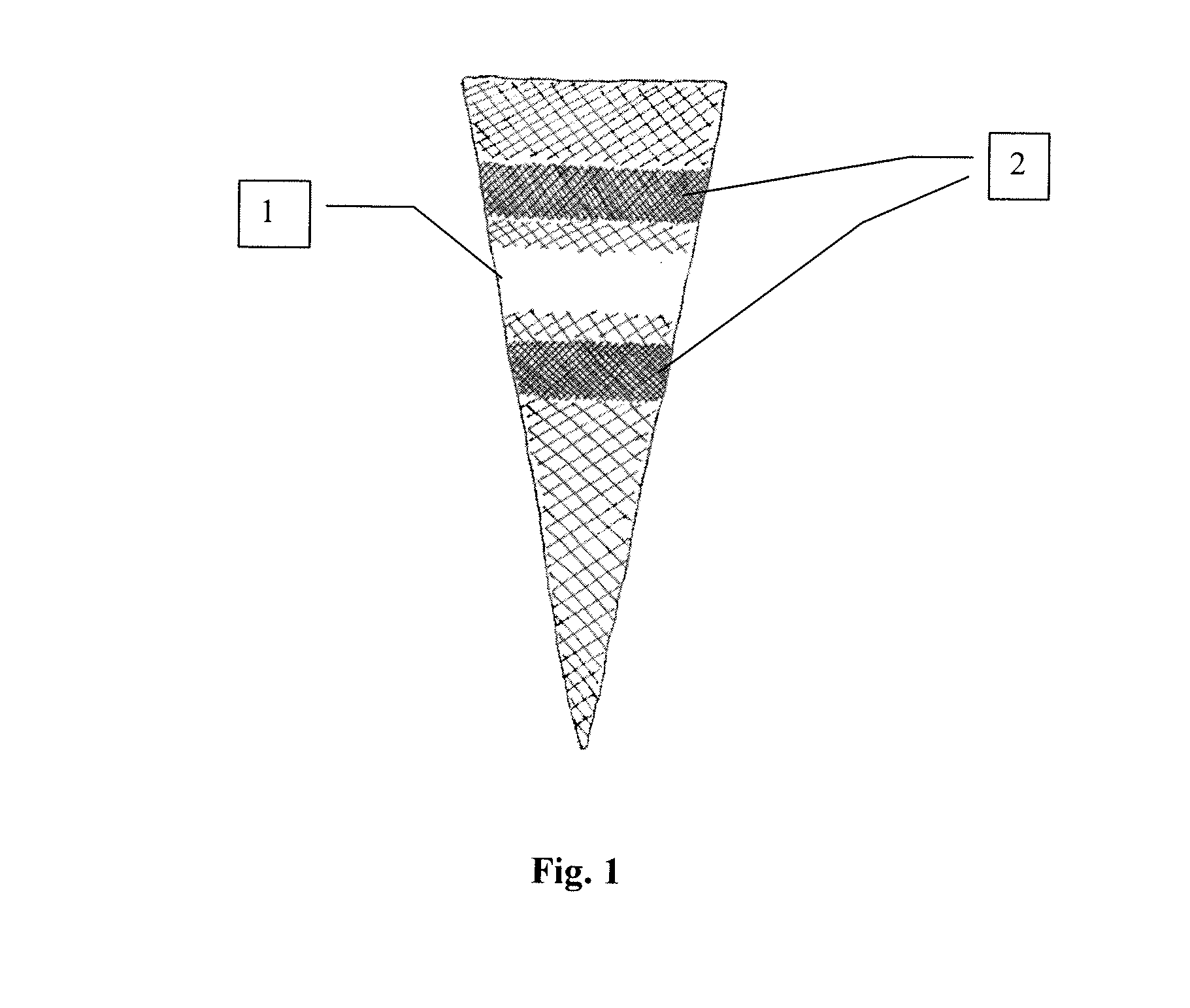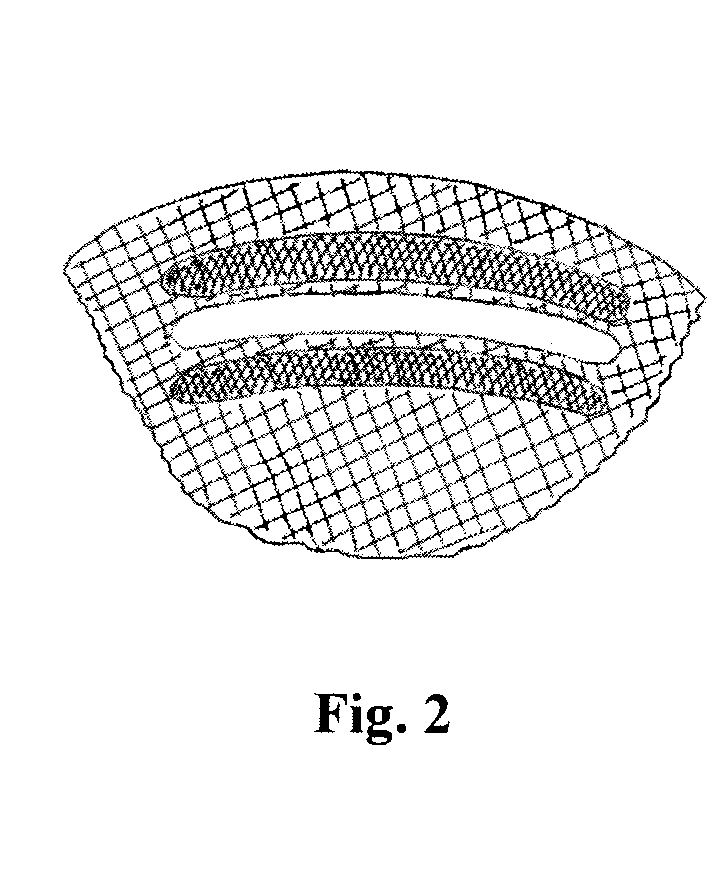Multi-colored cake cones
a cone and cake technology, applied in the field of cones, can solve the problems of brittleness, brittleness, brittleness of wafer sheets, and insufficient flexibility of wafer sheets to be shaped, and achieve the effect of separating flexibility
- Summary
- Abstract
- Description
- Claims
- Application Information
AI Technical Summary
Benefits of technology
Problems solved by technology
Method used
Image
Examples
example 1
Rolled Wafer Cones Decorated with a White Line
[0045]A regular sugar containing batter for rolled sugar wafer was prepared from the following ingredients:
IngredientPercent by wt.Flour38Sugar14Lecithin0.5Oil2Water45.5
[0046]And a sugarless dough was prepared following the recipe below:
IngredientPercent by wt.Flour32Lecithin0.5Oil2Water65.5
[0047]The general scheme for manufacturing decorated cones is shown in FIG. 6. First, using a dosing nozzle equipped with a spreading plate (FIG. 4), a dosage of 0.6 g sugarless dough was dispensed onto the hot baking plate to form a line (1 cm wide and 0.5 mm thick).
[0048]Subsequently, a dosage of 25 g regular sugar containing batter was poured over the sugarless layer. Following the closing of the baking plate, the regular dough was spread into the final shape of a wafer sheet of 1.5 mm thick, which fully covered the sugarless layer. After baking, the wafer sheet was picked-up and rolled around a conical tool where the cone cools down quickly and so...
example 2
Rolled Wafer Cones Decorated with a Dark Line
[0049]The recipes and the process were the same as those of Example 1 except that the sugarless layer was replaced by a sugar containing layer with a dark color, e.g. caramel color.
PUM
 Login to View More
Login to View More Abstract
Description
Claims
Application Information
 Login to View More
Login to View More - R&D
- Intellectual Property
- Life Sciences
- Materials
- Tech Scout
- Unparalleled Data Quality
- Higher Quality Content
- 60% Fewer Hallucinations
Browse by: Latest US Patents, China's latest patents, Technical Efficacy Thesaurus, Application Domain, Technology Topic, Popular Technical Reports.
© 2025 PatSnap. All rights reserved.Legal|Privacy policy|Modern Slavery Act Transparency Statement|Sitemap|About US| Contact US: help@patsnap.com



